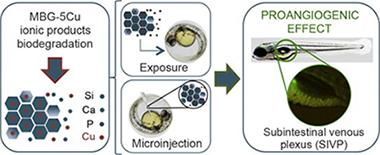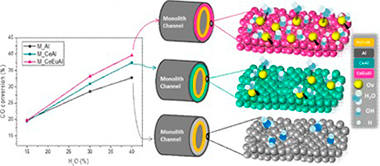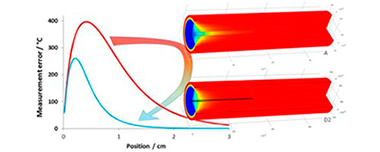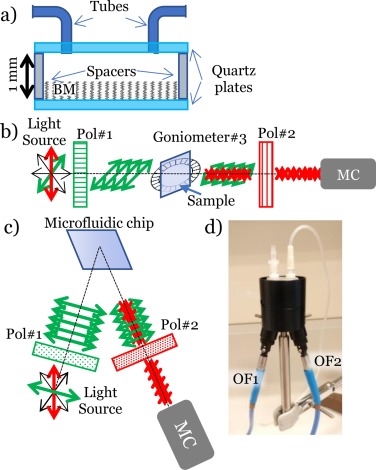Artículos SCI
2018
2018
Materiales Nanoestructurados y Microestructura
Biodegradabiliy of spherical mesoporous silica particles (MCM-41) in simulated body fluid (SBF)
Boccardi, E; Philippart, A; Beltran, AM; Schmidt, J; Liverani, L; Peukert, W; Boccaccini, ARAmerican Mineralogist, 103 (2018) 350-354
Show abstract ▽
Mesoporous silica particles of type MCM-41 (Mobile Composition of Matter No. 41), exhibiting highly ordered mesoporosity (pores with diameter between 2 and 50 nm) and surface roughness, are developed and used as a functional coating on bioactive glass-based scaffolds for bone tissue engineering. The degradability and the mesostructure stability of these novel MCM-41 particles were evaluated. The particles are immersed in simulated body fluid (SBF) for up to 28 days at 37 degrees C, and the variation of the ordered porosity, surface characteristics, and chemical composition of the particles are assessed by SEM-EDX, HRTEM, FTIR, ICP-OES, and pH measurements. The results indicate that the MCM-41 particles are affected by immersion in SBF only during the first few days; however, the surface and the mesopore structure of the particles do not change further with increasing time in SBF. The pore channel diameter increased slightly, confirming the stability of the developed material. The release of dissolved Si-species, which reached a maximum of 260 mg SiO2 per gram of material, could play a key role in gene activation of osteoblast cells and in inducing new bone matrix formation.
Marzo, 2018 | DOI: 10.2138/am-2018-6281
Materiales para Bioingeniería y Regeneración Tisular
Copper-containing mesoporous bioactive glass promotes angiogenesis in an in vivo zebrafish model
Romero-Sanchez, LB; Mari-Beffa, M; Carrillo, P; Medina, MA; Diaz-Cuenca, AActa Biomaterialia, 68 (2018) 272-285
Show abstract ▽

The osteogenic and angiogenic responses of organisms to the ionic products of degradation of bioactive glasses (BGs) are being intensively investigated. The promotion of angiogenesis by copper (Cu) has been known for more than three decades. This element can be incorporated to delivery carriers, such as BGs, and the materials used in biological assays. In this work, Cu-containing mesoporous bioactive glass (MBG) in the SiO2-CaO-P2O5compositional system was prepared incorporating 5% mol Cu (MBG-5Cu) by replacement of the corresponding amount of Ca. The biological effects of the ionic products of MBG biodegradation were evaluated on a well-known endothelial cell line, the bovine aorta endothelial cells (BAEC), as well as in an in vivo zebrafish (Danio rerio) embryo assay. The results suggest that ionic products of both MBG (Cu free) and MBG-5Cu materials promote angiogenesis. In vitro cell cultures show that the ionic dissolution products of these materials are not toxic and promote BAEC viability and migration. In addition, the in vivo assay indicates that both exposition and microinjection of zebrafish embryos with Cu free MBG material increase vessel number and thickness of the subintestinal venous plexus (SIVP), whereas assays using MBG-5Cu enhance this effect.
Marzo, 2018 | DOI: 10.1016/j.actbio.2017.12.032
Química de Superficies y Catálisis
Tailoring structured WGS catalysts: Impact of multilayered concept on the water surface interactions
Gonzalez-Castano, M; Le Sache, E; Ivanova, S; Romero-Sarria, F; Centeno, MA; Odriozola, JAApplied Catalysis B-Environmental, 222 (2018) 124-132
Show abstract ▽

A novel multilayer approach for designing structured WGS catalyst is employed in this study as a response to the lack of new strategies in the literature. The approach proposes the use of two successive layers with different functionalities on metallic micromonolith substrate. The WGS catalyst behavior is modulated by the nature of the inner layer which determines the active species surface population by acting on the water activation step. The catalytic promotion attained by introducing inner ceria containing solids with increasing number of oxygen defects is intensely analyzed through FT-IR and H2O-TPD. Several evidences about the participation of the oxygen vacancies, as key sites, for water absorption processes are established. Besides, remarkable relationships between the water absorption strengths and the water splitting processes within their influence on the catalyst performance are also discussed.
Marzo, 2018 | DOI: 10.1016/j.apcatb.2017.10.018
Química de Superficies y Catálisis
Numerical study of the accuracy of temperature measurement by thermocouples in small-scale reactors
Blay, V; Bobadilla, LFChemical Engineering Research & Design, 131 (2018) 545-556
Show abstract ▽

Proper temperature measurement is imperative in any laboratory study if reliable data are to be obtained, particularly in the field of chemical kinetics. In this paper we analyze in silico some typical thermowell configurations used in small-scale reactors by coupling computational fluid dynamics (CFD) with conjugated heat transfer phenomena. This allows us to identify deviations in measurements arising from thermal radiation and self-conductivity in mid and high temperature ranges, in addition to radial temperature gradients. A novel design is proposed and optimized by additional simulation, showing potential for faster and more accurate temperature measurements.
Marzo, 2018 | DOI: 10.1016/j.cherd.2017.06.003
Nanotecnología en Superficies y Plasma
Robust polarization active nanostructured 1D Bragg Microcavities as optofluidic label-free refractive index sensor
Oliva-Ramirez, M; Gil-Rostra, J; Yubero, F; Gonzalez-Elipe, ARSensors and Actuators B-Chemical, 256 (2018) 590-599
Show abstract ▽

In this work we report the use of polarization active porous 1D Bragg microcavities (BM) prepared by physical vapor deposition at oblique angles for the optofluidic analysis of liquid solutions. These photonic structures consist of a series of stacked highly porous layers of two materials with different refractive indices and high birefringence. Their operational principle implies filling the pores with the analyzed liquid while monitoring with linearly polarized light the associated changes in optical response as a function of the solution refractive index. The response of both polarization active and inactive BMs as optofluidic sensors for the determination of glucose concentration in water solutions has been systematically compared. Different methods of detection, including monitoring the BM wave retarder behavior, are critically compared for both low and high glucose concentrations. Data are taken in transmission and reflection modes and different options explored to prove the incorporation of these nanostructured transducers into microfluidic systems and/or onto the tip of an optical fiber. This analysis has proven the advantages of the polarization active transducer sensors for the optofluidic analysis of liquids and their robustness even in the presence of light source instabilities or misalignments of the optical system used for detection.
Marzo, 2018 | DOI: 10.1016/j.snb.2017.10.060
- ‹ anterior
- 172 of 420
- siguiente ›














